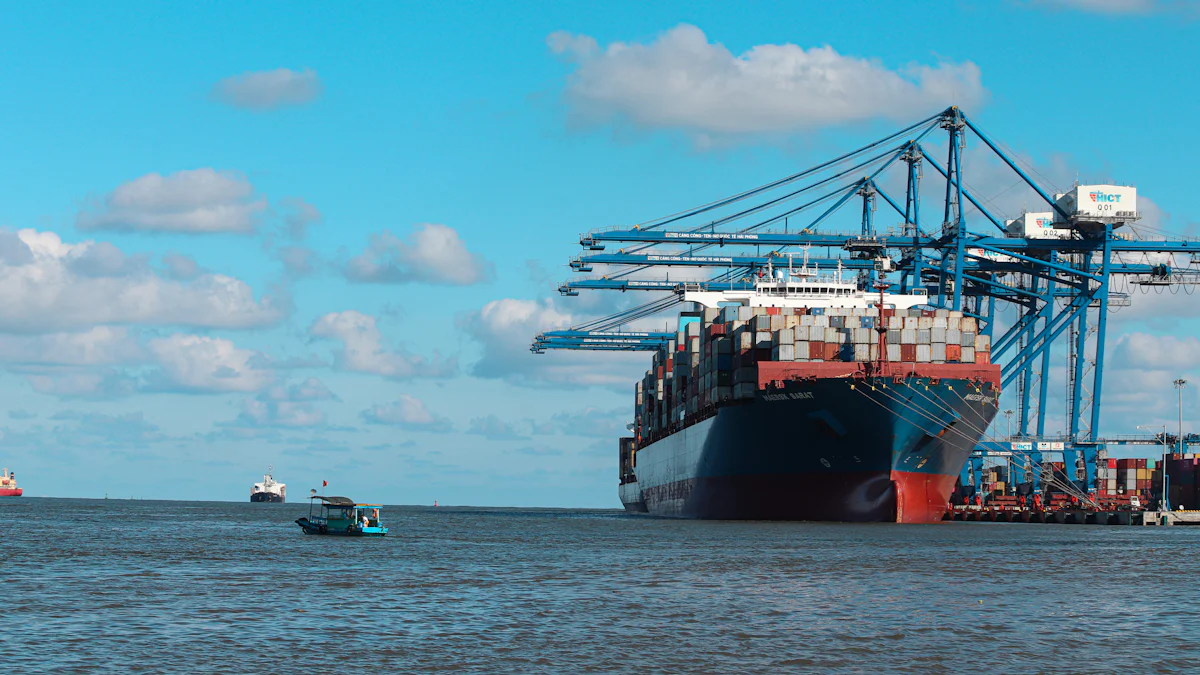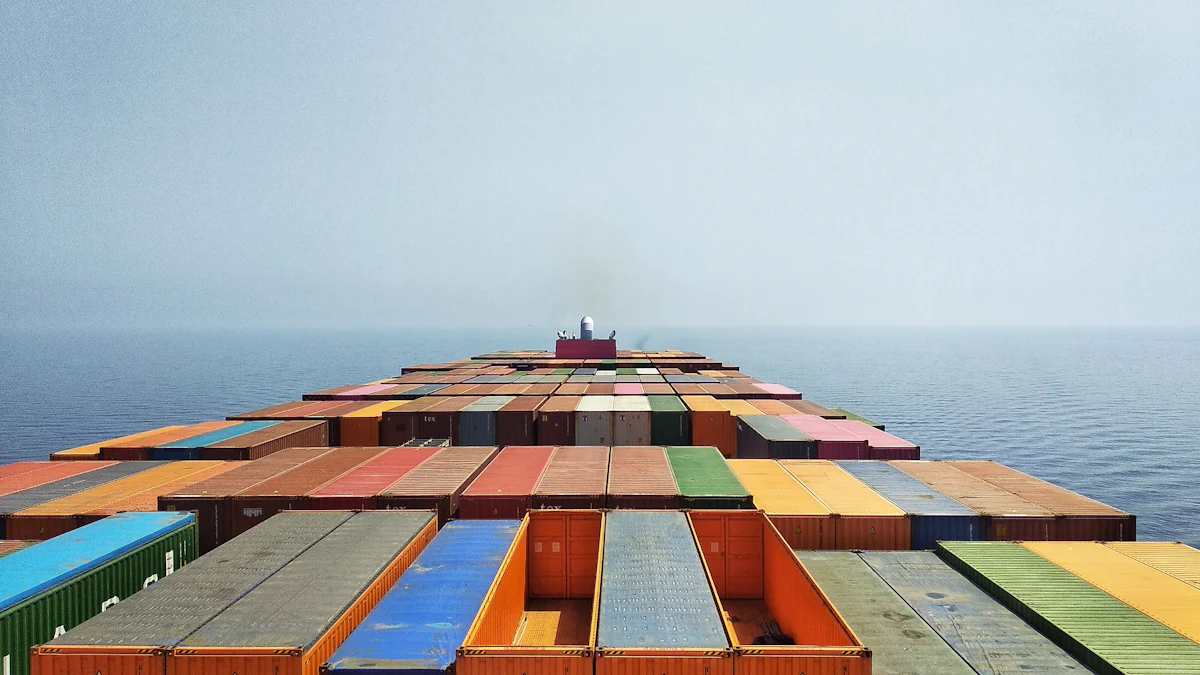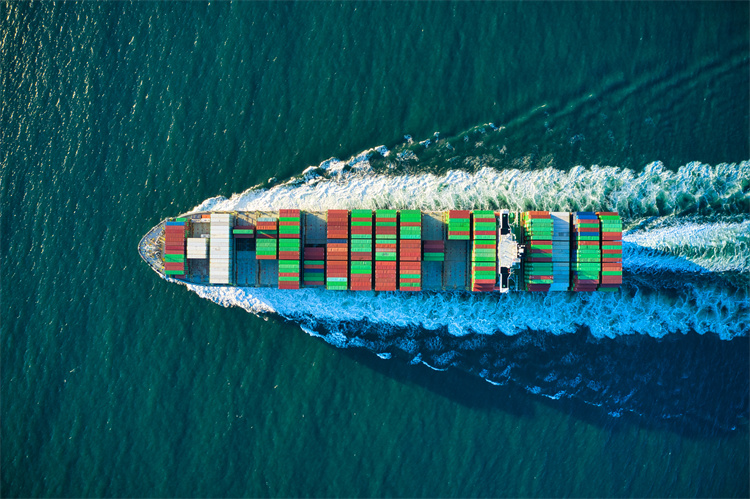How to Estimate Sea Freight Costs for FCL and LCL Shipments

Understanding how to calculate ocean freight charges is crucial if you want to manage shipping costs effectively. Whether you’re dealing with a full container load (FCL) or less than container load (LCL), estimating sea freight can feel overwhelming. You might struggle with measuring cargo, comparing rates, or accounting for extra fees. These challenges make it essential to choose the right service provider and get an accurate quote. By mastering these steps, you’ll avoid surprises and make smarter decisions for your shipment. Ocean shipping doesn’t have to be complicated when you know what to look for.
Key Takeaways
Understanding the difference between FCL and LCL is crucial: FCL is ideal for large shipments needing exclusivity, while LCL is cost-effective for smaller loads that share container space.
Accurate measurement of your cargo's weight and volume is essential for calculating sea freight costs, as carriers charge based on the higher of gross or dimensional weight.
Working with a reputable freight forwarder like JUSDA can simplify the shipping process, provide better rates, and help avoid hidden fees, ensuring a smoother experience.
Understanding FCL and LCL in Ocean Shipping

What is FCL (Full Container Load)?
FCL, or Full Container Load, means you’re renting an entire container for your shipment. This method works best when you have enough goods to fill a container or need exclusive use of one. It’s a popular choice for industries like electronics, furniture, and automotive. For example, dry cargo containers are perfect for items like textiles and machinery, while reefer containers keep perishable goods like fruits and medications fresh.
FCL shipping offers several advantages. It reduces the risk of damage since your goods won’t mix with others. It’s also faster because there’s no need for consolidation or deconsolidation. However, it can be expensive if you don’t fully utilize the container. Add-on costs like terminal handling fees and customs clearance can also increase your expenses.
What is LCL (Less than Container Load)?
LCL, or Less-than Container Load, is when your shipment shares a container with goods from other shippers. This option is ideal for smaller shipments that don’t need an entire container. It’s commonly used for diverse product lines or businesses with fluctuating shipping volumes.
LCL sea freight is cost-effective for smaller loads. You only pay for the space your goods occupy. However, it involves more handling, which increases the risk of damage. Transit times can also be longer due to the consolidation process. Despite these drawbacks, LCL offers flexibility and is a great option for businesses with smaller budgets.
Key Differences Between FCL and LCL
Here’s a quick comparison to help you decide:
Factor | FCL (Full Container Load) | LCL (Less than Container Load) |
|---|---|---|
Shipping Volume | More cost-effective for large shipments | Ideal for smaller, frequent shipments |
Budget | Economies of scale for large shipments | Cost savings for smaller loads |
Transit Time | Typically faster due to fewer handling processes | Longer due to consolidation processes |
Product Type | Better for high-value or sensitive goods | Suitable for diverse product lines |
Flexibility Needs | Less flexible, requires consistent volume | More flexible for fluctuating shipping volumes |
FCL works well for large shipments or sensitive goods that need minimal handling. On the other hand, LCL is perfect for smaller, frequent shipments where cost savings and flexibility matter most.
Tip: If you’re shipping high-value or fragile items, FCL might be the safer choice. For smaller shipments, LCL can save you money without compromising efficiency.
Factors That Influence Ocean Freight Rates
Weight and Volume of the Shipment
The weight and volume of your shipment play a huge role in determining sea freight rates. For LCL shipments, carriers calculate both the gross weight and the dimensional weight of your cargo. They’ll charge you based on whichever is higher. This ensures the cost reflects not just the actual weight but also the space your goods occupy.
Heavier or bulkier shipments take up more room in a container, which increases the total freight charges. To avoid surprises, you should measure and weigh your cargo accurately. Most carriers use three methods to calculate these values:
Dimensional/Volumetric Weight: This is based on the total volume of your shipment, calculated using its dimensions (length, width, and height).
Gross Weight: This includes the actual weight of your cargo plus any packing materials.
Chargeable Weight: This is the higher value between the gross and dimensional weights.
For LCL shipments, the billing unit is often measured in cubic meters (CBM), so understanding these calculations is key to managing your costs.
Shipping Routes and Distance
The route and distance your shipment travels also affect ocean freight rates. Longer routes mean higher fuel consumption and longer transit times, which increase costs. Popular routes, like the Transpacific or Asia-Europe trade lanes, often have higher rates due to demand. On the other hand, less-traveled routes might offer lower rates.
The specific path your cargo takes can also impact costs. For example, routes passing through congested areas or regions with piracy risks may come with additional surcharges.
Seasonal Demand and Market Conditions
Shipping costs often spike during peak seasons. For instance, demand surges before major holidays like Christmas or Chinese New Year. Limited container space during these times drives up rates. Supply chain challenges, such as port congestion or labor shortages, can further increase sea freight rates. To save money, consider shipping during off-peak periods when demand is lower.
Surcharges and Additional Fees (e.g., fuel, port charges, customs)
Surcharges and extra fees can significantly impact your total freight charges. These include fuel adjustment factors, port congestion fees, and customs charges. Other common fees include:
Low Sulfur Fuel Charge
Terminal Handling Charge
Emergency Bunker Surcharge
Container Cleaning Fee
Understanding these fees upfront helps you calculate ocean freight charges more accurately. Always ask your freight forwarder for a detailed breakdown to avoid hidden costs.
How to Calculate Sea Freight Costs with JUSDA
Step-by-Step Guide for FCL Cost Calculation
Calculating the cost of FCL shipping might seem tricky, but breaking it into steps makes it manageable. Here’s how you can do it:
Consider the shipping distance: Longer routes usually mean higher ocean freight rates.
Account for port fees and customs charges: These vary depending on the destination and cargo type.
Evaluate the weight and volume of your cargo: Larger or heavier shipments may increase the total freight charges.
Identify special cargo requirements: If your goods need extra handling or equipment, include those costs.
Add insurance costs: Protect your shipment by factoring in insurance.
You’ll also need to include container freight costs, chassis fees, and delivery charges for the entire container. JUSDA’s freight calculator simplifies this process, giving you accurate sea freight rates in minutes.
Step-by-Step Guide for LCL Cost Calculation
For LCL shipments, you only pay for the space your goods occupy. Here’s how to calculate sea freight for LCL:
Measure your shipment: Calculate CBM (Cubic Meters) by multiplying the length, width, and height of your cargo in meters.
Determine the freight rate per CBM: Your carrier or freight forwarder will provide this rate.
Calculate the basic freight charge: Multiply your shipment’s volume by the rate per CBM.
Add additional fees: Include origin and destination charges, fuel surcharges, and any special handling fees.
JUSDA’s expertise ensures you get transparent rates with no hidden costs. You’ll know exactly what you’re paying for.
Example Calculations for FCL and LCL
Let’s look at some examples to make things clearer:
FCL Example: If you’re shipping a 40-foot container, the cost includes a flat container rate, chassis fee, and port charges. For instance, a 40-foot container on a popular ocean shipping route might cost $3,000.
LCL Example: Suppose your cargo volume is 2 CBM, and the rate per CBM is $50. The basic freight charge would be $100. Add origin and destination fees to get the total freight charges.
JUSDA’s tools and expertise make freight rate calculation straightforward, whether you’re shipping FCL or LCL. You’ll save time and avoid surprises.
Choosing Between FCL and LCL for Cost-Effective Ocean Shipping

When to Choose FCL
FCL shipping works best when you’re moving large volumes of goods. If your shipment can fill an entire container, this option becomes more cost-effective. It’s also ideal if you need faster transit times since FCL avoids the delays caused by consolidation. High-value or sensitive goods, like electronics or medical equipment, benefit from the exclusivity of FCL. Your cargo won’t mix with others, reducing the risk of damage.
FCL is also great for businesses with consistent shipping needs. If you regularly ship large quantities, FCL simplifies logistics and lowers the per-unit shipping cost. Plus, it’s priced per container, making budgeting straightforward.
When to Choose LCL
LCL shipping is perfect for smaller shipments. If your cargo doesn’t fill a container, you’ll save money by sharing space with other shippers. This makes LCL a cost-effective choice for businesses with fluctuating shipping volumes. It’s also flexible, allowing you to ship smaller quantities more frequently.
However, keep in mind that LCL involves more handling. If your goods aren’t fragile, this won’t be an issue. LCL is also a smart option if you’re working with a tight budget. You only pay for the space your cargo occupies, which helps you manage costs effectively.
Cost-Effectiveness and Other Considerations
Choosing between FCL and LCL depends on several factors:
Shipping Volume: Large shipments favor FCL, while smaller loads suit LCL.
Budget: FCL offers economies of scale for big shipments. LCL saves money for smaller ones.
Transit Time: FCL is faster. LCL takes longer due to consolidation.
Product Type: Fragile or high-value goods are safer with FCL.
Flexibility Needs: LCL is better for fluctuating volumes.
Ultimately, the right choice depends on your priorities. Use a freight calculator to compare sea freight rates and get an accurate quote. Whether you choose FCL or LCL, understanding these factors will help you calculate ocean freight charges and optimize your shipping strategy.
Tips for Accurate Sea Freight Rates and Avoiding Hidden Fees
Work with Reputable Freight Forwarders like JUSDA
Choosing the right freight forwarder can make or break your shipping experience. A reputable company like JUSDA simplifies the process and ensures you get accurate sea freight rates. They have access to a global network of carriers, which means better deals and lower shipping costs for you. Their established relationships with carriers also help secure timely deliveries and reduce risks like damage or theft.
JUSDA’s expertise goes beyond just cost savings. They handle documentation accurately, ensuring compliance with regulations and avoiding delays. Their advanced tools, like JusLink, provide real-time updates, so you always know where your shipment is. Working with a trusted partner like JUSDA gives you peace of mind and helps you avoid unnecessary surprises.
Understand the Terms and Conditions
Before signing any contract, take the time to understand the terms and conditions. These documents outline critical details like rates, responsibilities, and risk allocation. For example, some contracts include volume commitments, which could help you negotiate better prices if you ship regularly. Others specify service levels, ensuring timely deliveries based on vessel schedules.
Pay close attention to clauses about equipment availability and additional fees. Knowing these details upfront helps you avoid misunderstandings later. If something seems unclear, don’t hesitate to ask your freight forwarder for clarification. A little effort now can save you from costly mistakes down the road.
Key Term | Description |
|---|---|
Volume Commitments | Shippers agree to convey a specific amount of goods, potentially negotiating better prices. |
Service Levels | Negotiations for timely delivery based on port rotations and vessel timetables. |
Equipment Availability | Contracts may include terms regarding the availability of specific containers for shipping needs. |
Ask About Additional Charges Upfront
Hidden fees can quickly inflate your shipping costs if you’re not careful. Always ask your freight forwarder for a detailed breakdown of charges. Common additional fees include terminal handling charges, customs duties, and marine cargo insurance. You might also encounter surcharges like the bunker adjustment factor or peak season surcharge.
Understanding the concept of “free time” is another way to avoid unexpected costs. Free time refers to the period you have to pick up and return containers without extra charges. If you exceed this time, you could face demurrage or per diem fees. Clear communication with your freight forwarder ensures you know all potential costs upfront, helping you budget more effectively.
Pro Tip: Compare quotes from multiple freight forwarders and consult industry professionals for recommendations. This helps you identify fair pricing and avoid overpaying for services.

JUSDA Solutions
To provide you with professional solutions and quotations.
Understanding sea freight costs for FCL and LCL shipments helps you make smarter shipping decisions. Key factors like volume, distance, and surcharges directly impact rates. By following the outlined steps, you’ll estimate costs more accurately and avoid surprises.
If you’re unsure, consult experts like JUSDA. They simplify the process, negotiate better rates, and ensure your shipment is secure. Their expertise saves you time and money while giving you peace of mind. Ready to optimize your shipping strategy? Start applying these tips today!
See Also
Exploring Tomorrow's LTL Freight: An In-Depth Review
Reducing Logistics Costs: Your Complete Handbook
Understanding Supply Chain Economics for Cost Efficiency
